Chimanuka Group Feeds on Ripe Fruit of the Myiranthus Tree
By Gorilla Doctors Staff on Tuesday, July 15th, 2014 in Blog.The Chimanuka group Grauer’s gorillas were feeding on the ripe fruit of the Myiranthus tree during Dr. Eddy’s visit last week in the Mwandagalo area of Kahuzi Biega National Park. Eighteen night nests were found (13 on the ground, 5 up in the trees) and all 18 individuals were observed.
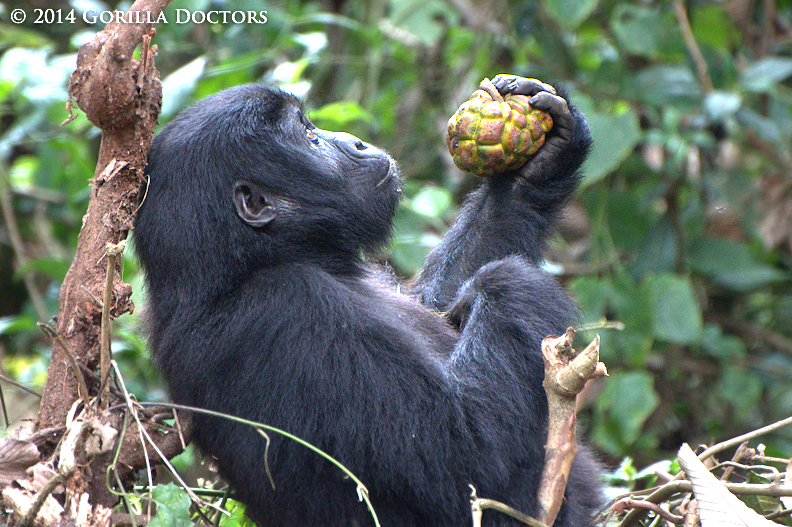
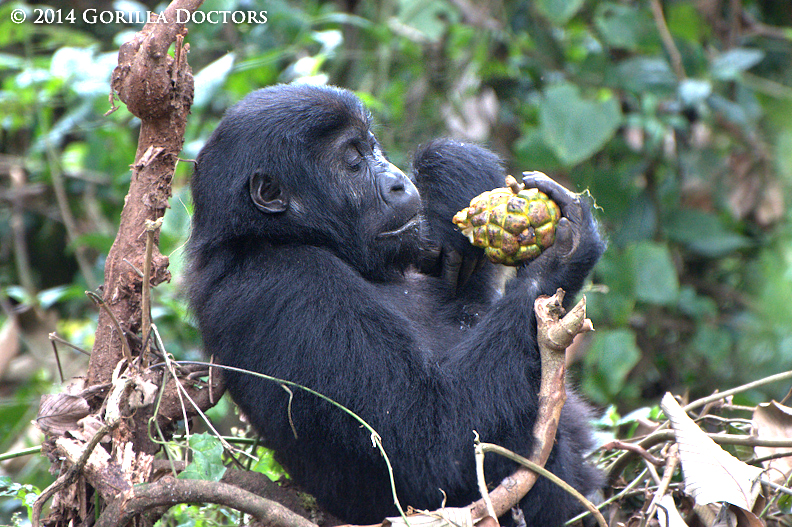
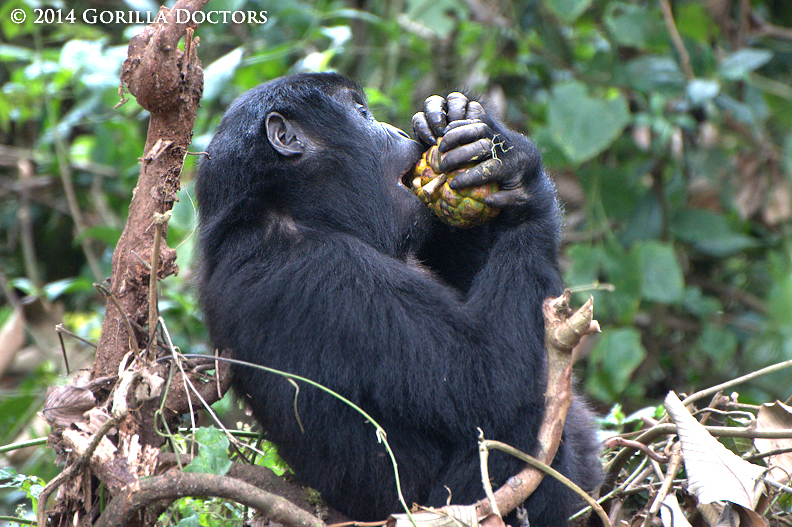
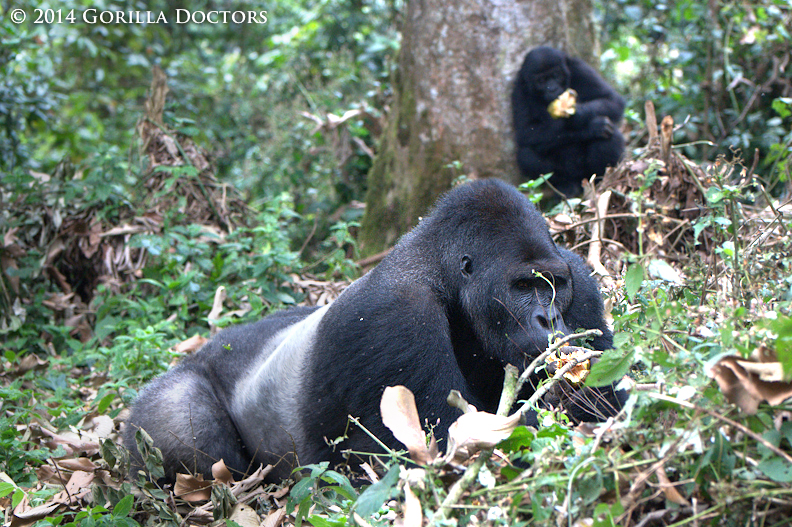
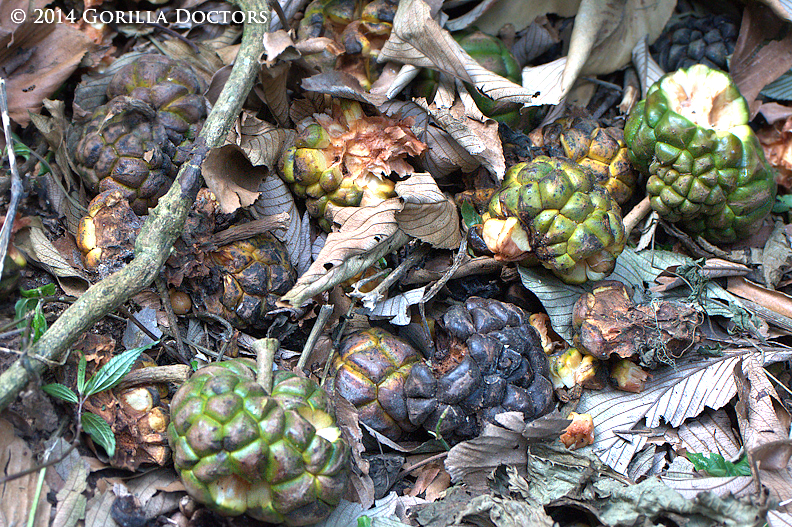
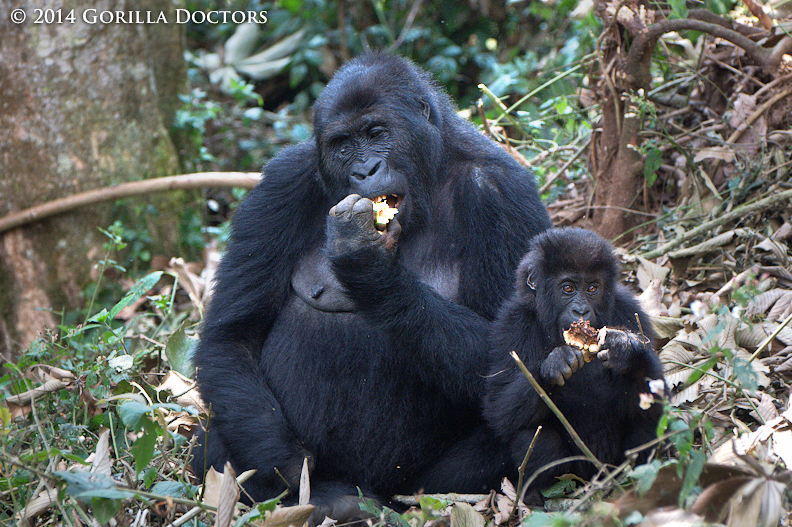
The group interacted with a wild lone silverback earlier in the week and the outsider succeeded in taking 3 females from dominant silverback Chimanuka. Luckily, there were no signs of injury from the interaction.
Three-year-old infant Marhale has struggled from the loss of his mother Makali (who died in September 2013 after sustaining serious wounds from a fight with a silverback) forcing him to become weened at a very early age. Although the infant’s health is fragile and he was seen crying out, Dr. Eddy observed adult female Mwinja carrying Marhale around with her, held protectively between her forearm and chest. She was observed feeding alongside and grooming the infant during the health check.
Near the group, Dr. Eddy saw a bat hanging from a tree. Our PREDICT veterinarians are humanely testing bats, which are known vectors for infectious disease, to determine risk levels of disease transmission.
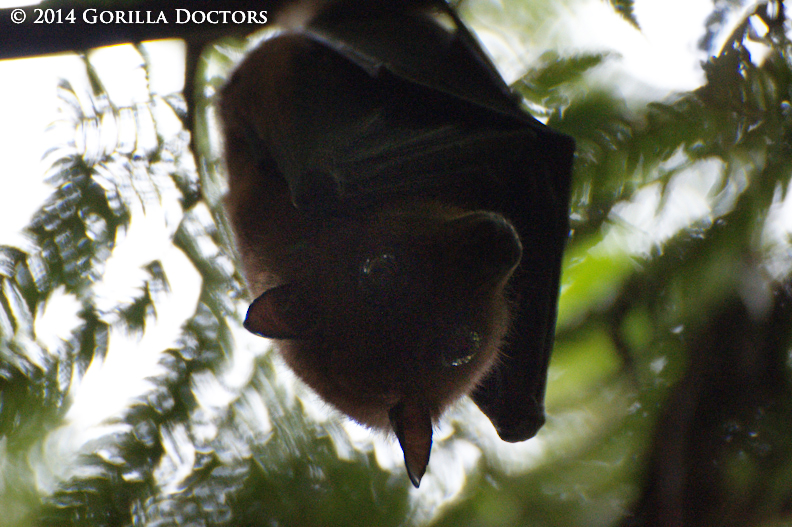 A bat hanging out near Chimanuka group in Kahuzi Biega National Park.
A bat hanging out near Chimanuka group in Kahuzi Biega National Park.
As the team trekked out of the forest, a wire snare was found and destroyed by the park rangers.
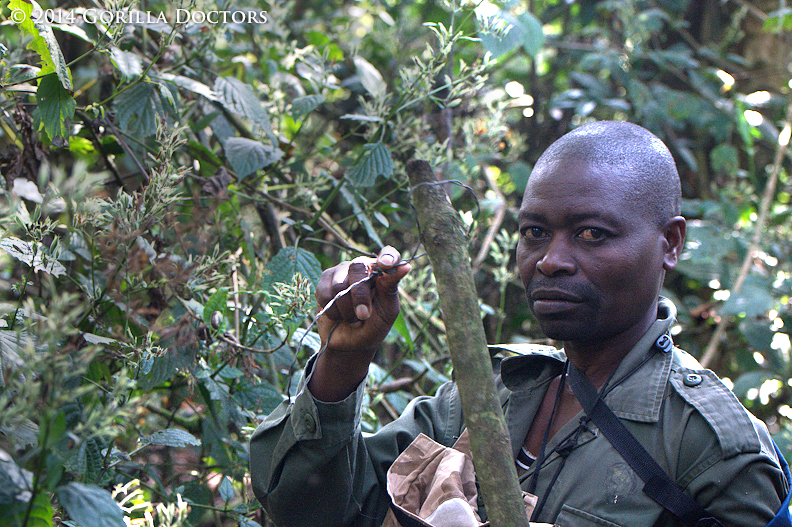 A Kahuzi Biega National Park tracker destroys a wire snare found on the trail.
A Kahuzi Biega National Park tracker destroys a wire snare found on the trail.
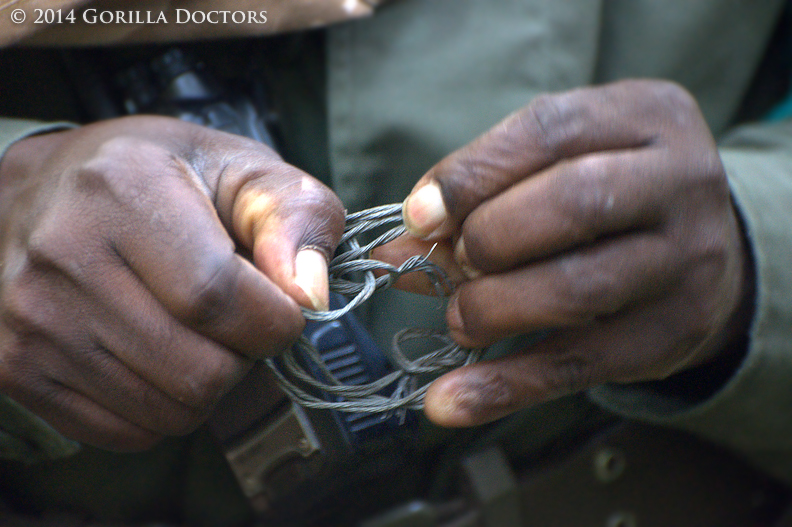 A poacher’s wire snare found in Kahuzi Biega National Park, DRC.
A poacher’s wire snare found in Kahuzi Biega National Park, DRC.
While in Kahuzi Biega National Park, Dr. Eddy also assessed the health of Pungwe group, the newest Grauer’s gorilla family currently being habituated to human presence. Eleven night nests were found in the Kyanderema area. When the field team arrived to the group, they first observed an adult female quietly feeding on vegetation and reported that she did not seem bothered at all by their presence. Dominant silverback Pungwe charged intermittently, as he is known to do, but with less intensity and less frequency than during previous visits. The other members of the group tolerated the field team’s close proximity while they fed in a tree. It appears that the group is well on it’s way to being habituated to human presence and will eventually be available for tourist visits.


 Donate
Donate
